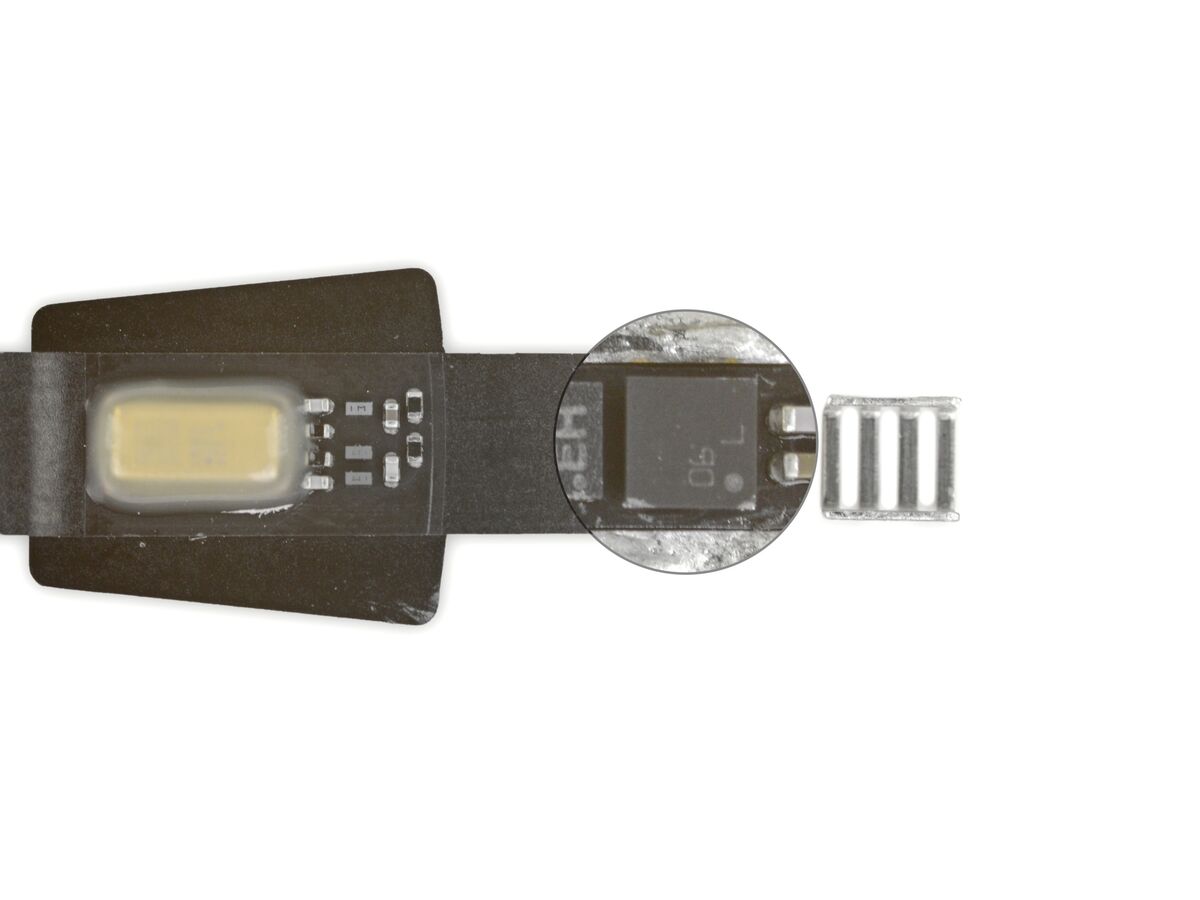

An opened Apple HomePod mini with the hidden temperature and humidity sensor.
Source: iFixit; Magnified by Bloomberg
Source: iFixit; Magnified by Bloomberg
The HomePod mini speaker from Apple Inc. launched in November with new features such as a home intercom system. But part of the device has remained a secret: a sensor that measures temperature and humidity.
The Cupertino, California-based technology giant never disclosed this part, and the device is currently missing the consumer-facing features that use it. The company has spoken internally about using the sensor to determine the temperature and humidity of a room, so that thermostats with internet connection can adjust different areas of a home based on current conditions, according to people familiar with the situation. The hardware can also have the HomePod mini automatically trigger other actions, such as turning a fan on or off, depending on the temperature.

Texas Instruments humidity and temperature sensor of a HomePod mini.
Source: iFixit; Magnified by Bloomberg
If Apple eventually enabled the sensor, it would support a smart home strategy that sometimes lacked focus and lagged rivals. The latest Echo speakers from Amazon.com Inc. have temperature sensors, while Google’s Nest sells sensors that can be placed in homes and connect to the thermostats to adjust the temperature of any room.
The new capabilities would be a special boon for an Apple software system called HomeKit that controls thermostats, lights, locks, plugs, and other devices in the home. HomeKit works with fewer gadgets than comparable software from Amazon and Google, and Apple doesn’t make its own smart home hardware outside of the HomePod and Apple TV streaming box. However, about 40 thermostats are provided on Apple’s website that are compatible with HomeKit.

Size comparison of the temperature sensor and an SD card.
Source: iFixit
The sensor, which measures 1.5 by 1.5 millimeters, is buried in the bottom of the HomePod mini’s plastic, fabric-wrapped housing near the power cable. The location of the part was confirmed by iFixit, which took one of the speakers apart after a question from Bloomberg News. The sensor was made by Texas Instruments Inc. and is called the HDC2010 digital humidity and temperature sensor, according to TechInsights, a company that analyzes components in electronics.
The part is relatively far from the main internal components of the device, which means that it is designed to measure the external environment rather than the temperature of the speaker’s other electronics. Many mobile devices contain sensors that can trigger the device to slow down performance or disable functions to prevent overheating of components.

The other side of the sensor.
Source: iFixit
While it’s rare, this isn’t the first time Apple has put a dormant piece of technology into its devices. The 2008 iPod touch had a Bluetooth chip, but support for Bluetooth connectivity was made possible through software the following year. Apple typically releases major HomePod software updates annually in the fall. It’s unclear if and when Apple will enable the temperature sensor, but its presence in HomePod mini units that have already been sold suggests this is only a matter of time. An Apple spokeswoman declined to comment.
Apple didn’t have a serious offering in the smart home market with the original HomePod until 2018. That device was recently discontinued after moderate sales. Some decision makers at the company are concerned that it may be too late for Apple to make a strong entry into the industry, especially as it focuses on other new categories such as headsets for virtual and augmented reality and electric self-driving cars. Others think the company can take their time and customers will still be interested.

Apple’s HomePod mini speaker will be unveiled during a virtual product launch.
Photographer: Daniel Acker / Bloomberg
Some insiders blame the lack of progress so far at home on Siri, Apple’s speech recognition service that, while improved, is still considered to be behind Amazon’s Google Assistant and Alexa. Whatever the reason, no unifying strategy has emerged so far, said one of those familiar with the situation. The people asked not to be identified and discussed sensitive issues. This comes after Apple tried to revamp its smart home efforts a new team it began to form in 2019.
Apple continues to eliminate this opportunity through updates for individual devices. Before the larger HomePod shut down, the company was working on an updated version to be released in 2022. It has also developed new speakers with screens and cameras, but such a launch is not forthcoming. Apple is also working on an update to the Apple TV set-top box. Until then, Apple will likely try to unlock most of the HomePod mini’s functionality.